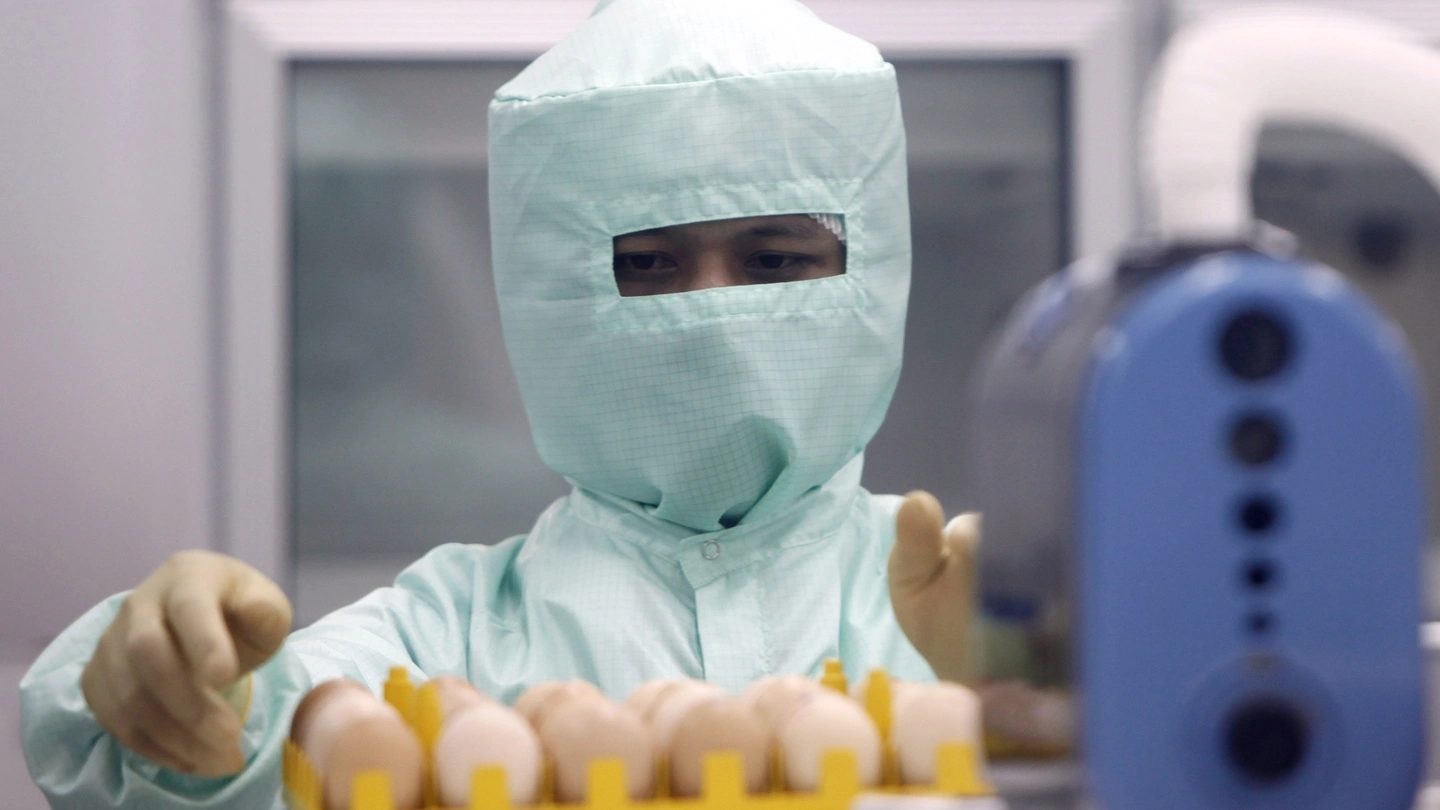Svineinfluenza, eller H1N1, havde været død i 20 år, da den pludselig dukkede op igen i 1977 med en mærkelig ændring. Den nye stamme lignede genetisk den fra 1950'erne, næsten som om den havde siddet frosset i et laboratorium siden da. Faktisk blev det til sidst klart, at influenzaudbruddet i slutningen af 70'erne sandsynligvis var resultatet af en laboratoriemedarbejders fejl.
Lab-ulykker som den er ekstremt sjældne. Stadig argumenterer to videnskabsfolk nu for, at det ikke er værd at fortsætte med at skabe nye, overførbare versioner af dødbringende vira i laboratorier, fordi risikoen for, at sygdommene slipper ud og inficerer offentligheden, er for stor.
In recent years, scientists have found a way to make H5N1 jump between ferrets, the best animal model for flu viruses in humans. They say they need to create a transmissible version in order to better understand the disease and to prepare potential vaccines.
Comment: Sounds like a pretty lucrative business model: create a virulent disease, 'accidentally' leak it and then reap the rewards in vaccine sales.
That worries people like Marc Lipsitch and Alison P. Galvani, two epidemiologists who write in a PLoS Medicine editorial today that creating these types of new infectious agents puts human life at risk. They estimate that if 10 American laboratories ran these types of experiments for a decade, there would be a 20 percent chance that a lab worker would become infected with one of these new super-flus and potentially pass it on to others.
"The concern is that you're making something that doesn't exist in nature and combines high virulence for people with the ability to transmit efficiently," Lipsitch told me.
Accidents involving lab-grown pathogens aren't just the stuff of sci-fi movies. A Singaporean lab worker was inadvertently infected with SARS in 2003. In 2004, a Russian scientist died after accidentally sticking herself with a needle contaminated with Ebola at a Siberian lab. In April, Paris' Pasteur Institute lost 2,000 vials containing the SARS virus. And in March, the Galveston National Laboratory in Texas lost a vial containing Guanarito virus, which causes "bleeding under the skin, in internal organs or from body orifices like the mouth, eyes, or ears."
The medical world seems perpetually torn between the desire to eliminate horrific diseases entirely and the need to preserve them for future study. Thanks to vaccination, smallpox was eradicated in 1980, but there are still two samples of it living in labs — one in the U.S. and one in Russia. Some scientists argue that those vials should be destroyed because there's a chance they could be used in bioterrorism. There is no cure for smallpox, and it kills a third of its victims. The rest suffer permanent scarring from the thousands of "pox," or fluid-filled cysts.
"The hazard is, could it ever by accident or by evil design leave those two containments and actually be introduced into the population again and spread?" William Schaffner, chair of preventive medicine at Vanderbilt University Medical Center in Nashville told ABC News. The World Health Assembly is deciding this week whether to destroy the vials.
Most labs have near-bulletproof safety standards, with workers wearing plastic hoods and working behind heavy steel doors. Still, leaks can happen because of failures in respiratory equipment, Lipsitch said, or if a worker accidentally touches their eyes or nose with a contaminated glove.
"We have data from past experience in various labs that human infection in those labs are not a common event, but with enough labs working for enough years, it's been observed over and over again," Lipsitch said. "Marburg and Ebola viruses have both infected lab workers at a higher level of containment than these [H5N1] experiments."
He added that past lab accidents haven't resulted in worldwide spread partly because the viruses weren't as contagious in those cases.
"In the case of Ebola and Marburg — they aren't that readily transmissible," he said. "In the case of SARS, which has been involved in at least three separate lab accidents, there was onward transmission in one case, but it was contained, so we got lucky."
Lipsitch suggests that, rather than breed the new mammal-transmissible viruses, scientists just use pieces of the H5N1 strain for their research or work on ancestors of the virus.
The scientists conducting the ferret-based H5N1 experiments went through a year-long voluntary moratorium after a controversy over the studies' safety flared in 2011. In January 2013, they declared that the experiments would resume because the lab conditions for the experiments met the necessary safety checks. "Because H5N1 virus transmission studies are essential for pandemic preparedness and understanding the adaptation of influenza viruses to mammals," they wrote in Science, "researchers who have approval from their governments ... have a public health responsibility to resume this important work."
Olga Khazan is a staff writer at The Atlantic and the author of Weird: The Power of Being an Outsider in an Insider World.




Kommentar: It's not exactly comforting knowing the scientists are working with lab created deadly diseases to be better prepared for pandemics in the future, knowing that their hubris is likely to cause those very outbreaks they're preparing for.
See also: